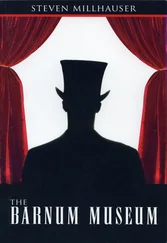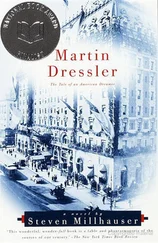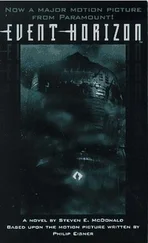But this method of ascent led to a second problem, which hadn’t been anticipated. As dwellers in the plain climbed the Tower, their relation to the world below became less and less definite; after a certain point, a climber understood that he could no longer return to the plain during his lifetime. Such people, and there were many, found themselves neither on earth nor in heaven, but in some in-between realm, in which it was easy to feel deprived of the pleasures of both places. One solution to this problem was for people to remain in a comparatively low portion of the always rising Tower, too high to descend to the plain, but close enough to those below for tales of the plain to reach them within a reasonable stretch of time; meanwhile, from a much greater distance, reports of heaven could find their way down. The drawback of this solution was that the farther from the top a climber found himself, the less reliable the reports from above were likely to be. For this reason, many in-betweeners climbed as high as they could, in order to be closer to the upper reports, with the corresponding disadvantage of receiving from below reports that grew less trustworthy as the height increased.
Just as the problem of reaching the top of the Tower had led to a number of unforeseen difficulties and confusions, so a host of purely technical problems had arisen during the long labor of construction. The original plan had called for a spiral ramp running around the outside of the Tower, along which lines of workers could transport fire-baked bricks and buckets of bitumen. But at the height of a thousand feet — a height three times greater than any tower had ever attained — it became clear that the original calculations had failed to anticipate the actual strains on so vast a structure. It was therefore necessary to widen the base to nearly four times its original dimensions — a labor that caused the destruction of large sections of the city. And so a second Tower, as it were, grew up around the first, to the height of a thousand feet. At that point a single Tower continued to rise, but now containing an inner ramp that was the continuation of the original outer pathway. The Tower now had two circular paths, an inner and an outer, both of which were used by workers who, as the Tower rose higher, began to work inward from the outer ramp, and outward from the inner ramp, and who began to leave, along the inner ramp, small hollows used as storage and resting spaces.
As the Tower rose still higher, workers encountered another problem. How could they transport new bricks to the always rising top of the Tower? For already, even at this very early stage of construction, it took many days for the bricks to be moved from the kilns in the brickmakers’ workshops to the upper rim of the Tower, by means of solid-wheeled carts pulled by two men round and round the gently sloping ramps. The problem was solved by assigning special workers, called carriers, to levels separated by thousand-foot intervals. From each level the carriers moved bricks to the next carrier above, who brought them to the next carrier, and so on. The carriers, who of necessity became permanent dwellers in the Tower, enlarged the storage and resting spaces into primitive dwelling places, which later were elaborated into one of the Tower’s most striking features.
For once the carriers had begun to live in the Tower, bringing with them their wives and children, the notion of permanent residence began to take hold. Toward the end of the second generation, when the Tower was already so high that it disappeared into the brilliant blue sky, like a long pole thrust into deep water until the end trembles, shimmers, and vanishes entirely, the King of Shinar, renowned for his piety, ordered workers to prepare a court high in the clouds, where he intended to spend his remaining days in fasting and prayer. When the court was ready, the forty-year-old King left his palace, and in the company of his Queen, his sons, his diviners, his concubines, his courtiers, his menservants, and his musicians began the long climb up the inner ramp of the Tower; by the time he arrived in his new quarters he was an old man, his Queen long dead, his sons solemn with middle age, but he took up residence in the broad halls and richly appointed chambers that stretched away on both sides of the inner ramp.
News of the high court spread quickly. It soon became fashionable for merchant families and even skilled laborers to arrange for living quarters within the Tower, far above the roofs of the temples and the royal palace, higher than the smoke of sacrificial fires, higher, it was said, than the dreams of young women fetching water from wells on rich blue summer afternoons. In this manner the city on the plain was gradually drawn inside the great Tower. The Disappearance, as it was later called, came about in part because of the example of the pious King, but in part, too, because it was terribly oppressive for people to live at the foot of an enormous heaven-seeking Tower, which threw its shadow farther than a man could travel in a month and which, even at a distance, loomed like a raised arm about to strike a blow. Slowly the dwellings of the city were abandoned, the streets deserted, the gardens run to seed; the poor now gathered in ramshackle huts attached to the vast base of the Tower; after a time there was nothing left in the ruined city but wild sheep and lean oxen roaming the weed-grown streets, frogs in the wells, snakes and scorpions in the abandoned temples and dwelling places.
But no sooner had the Tower swallowed the city than a new desire arose, which no one could have foreseen. Even those who had thought long and hard about the Tower, in the days when the city flourished — the temple priests, the royal household, the administrative officials, the chief scribes — even they had failed to imagine one small but eventful change: a gradual loss of mystery and power, in the glorious structure that rose higher than the flight of eagles but that had come to seem, as the years passed, just a little familiar. The Tower had, after all, been in existence for as long as anyone could remember. Although it was growing higher, day by day, it was always the same size to those within it and even to those few who had remained in the surrounding countryside, for the work at the top took place in invisible regions far beyond the range of earthbound sight. At the same time, even among people who believed firmly that the Tower would one day reach heaven, the early expectation of a rapid and almost miraculous success had long been abandoned. It was therefore natural enough to feel that the rise toward heaven was, in a sense, part of the unchanging essence of the Tower, that the act of completion belonged to a different tower, a dream tower, a tower out of childhood stories, and was in any case an event so far in the future that it no longer had direct force in the lives of any but a handful of fanatical believers. There thus arose, in the hearts of the Tower dwellers, a nostalgia for the plain, for the shouts of the marketplace, the sunlight falling past the awnings onto heaps of apricots and figs, the sun and shade of the courtyards, the whitewashed temples, the outlying gardens shaded by date palms. And it came to pass that after a time many of the Tower dwellers began to descend and take up their old lives in the shadow of the Tower, rebuilding their ruined homes, planting their gardens outside the city walls, and gathering daily around the stalls in the market.
When, therefore, the Tower was completed, it contained a considerable population who lived on nearly every level, in chambers varying from primitive caves to rich halls painted with red, black, and lapis-blue hunting scenes, above a thriving city that had already forgotten its earlier abandonment and decay. The news of the successful completion led to a number of immediate changes. The city dwellers, who for their entire lives had scarcely given a thought to the perpetually unfinished Tower in their midst, suddenly stared up at a new, mysterious Tower, an unknown Tower, a Tower that had sprung out of the old one in a single, exhilarating leap. Tower-fever swept the populace. Helplessly caught up in the new upward-flowing excitement, people began the impossible climb, without any hope of reaching the top. Meanwhile those already living in the Tower were shaken by the news — some rushed to begin the final ascent, others, far below, drove themselves to climb higher, while still others, though remaining in their chambers for reasons of health or spiritual feebleness, kept raising their eyes nervously, as if their ceilings would burst, as they awaited word from returning travelers.
Читать дальше












